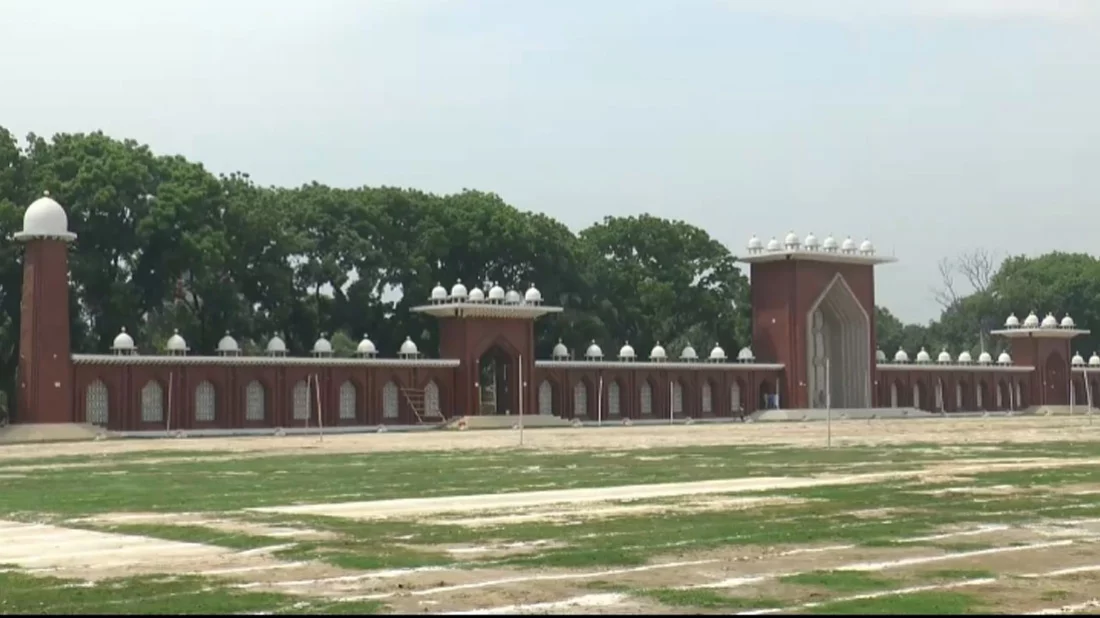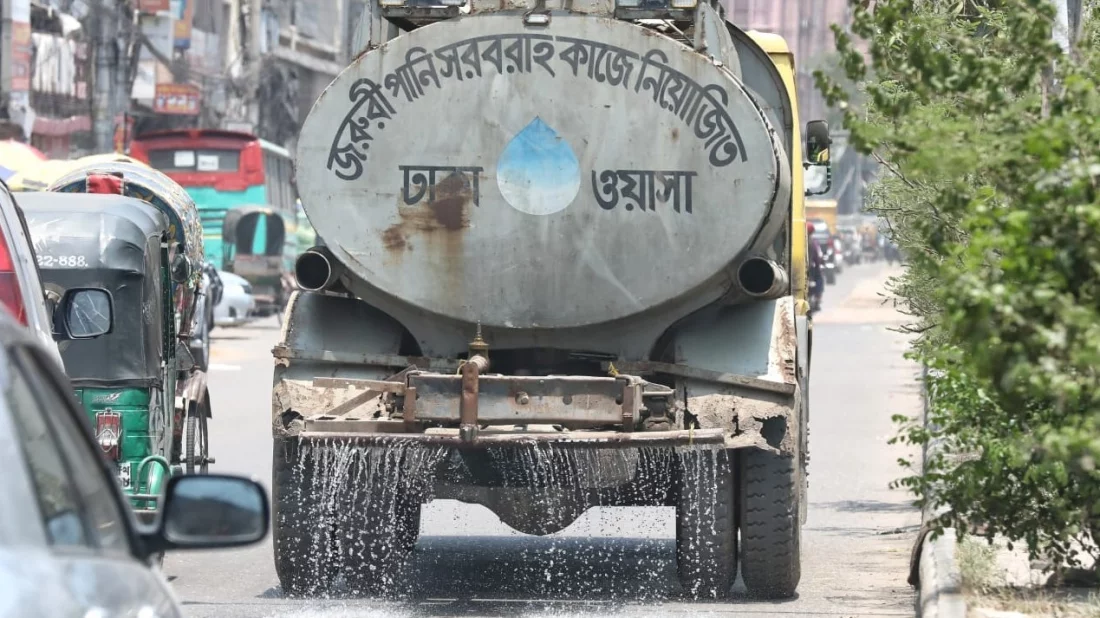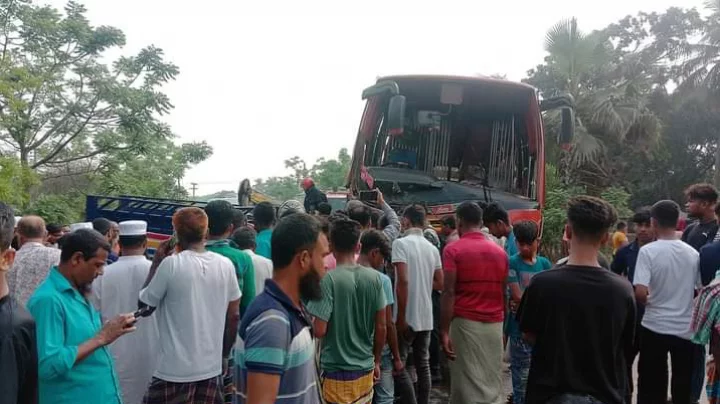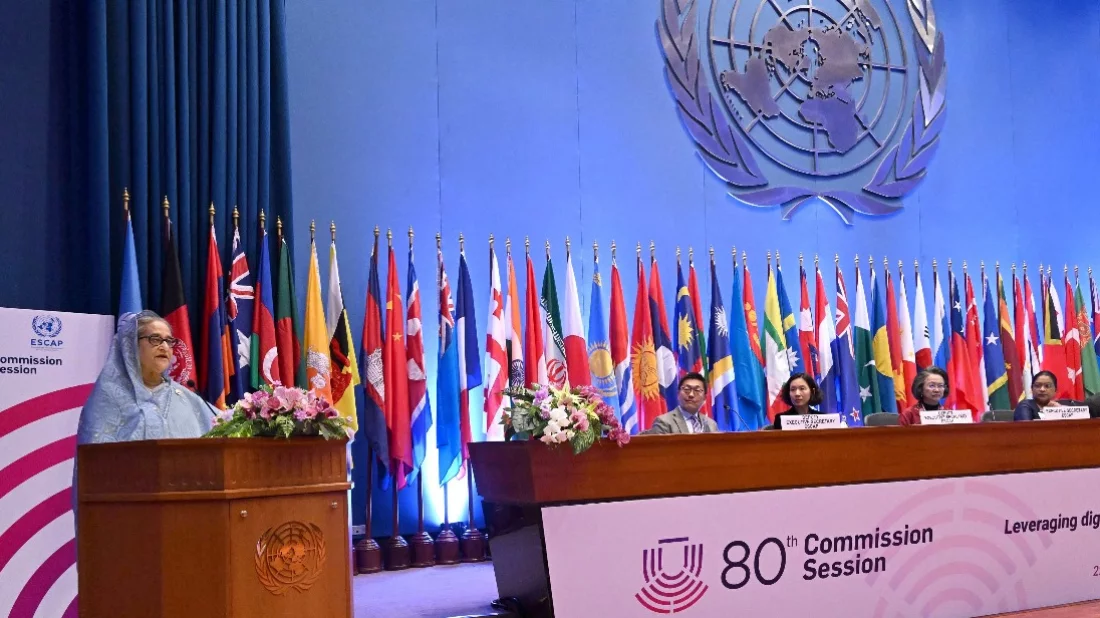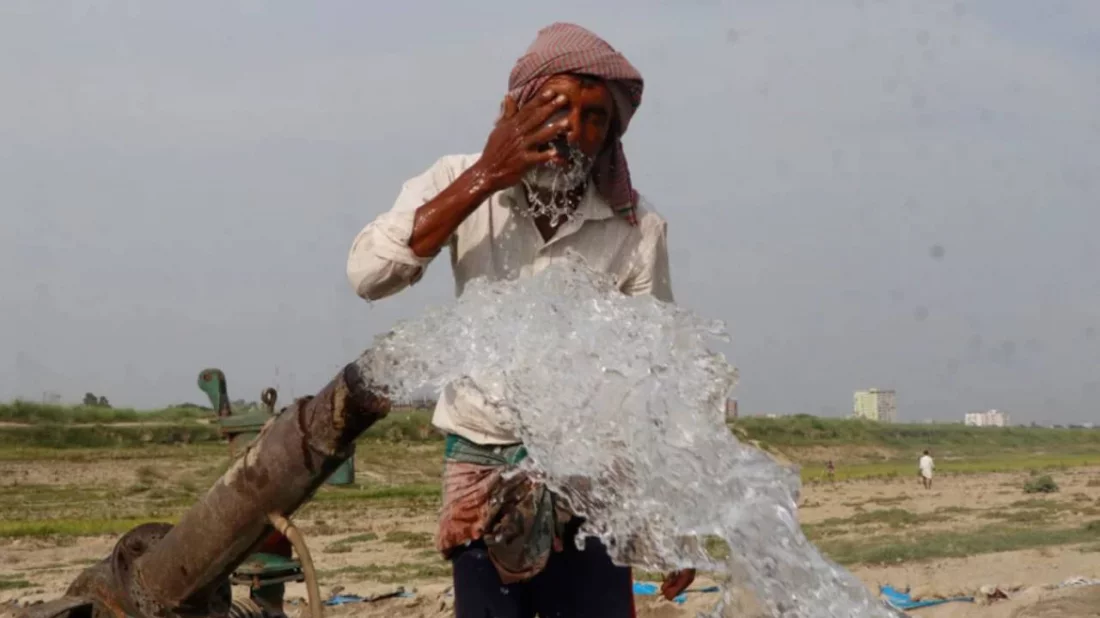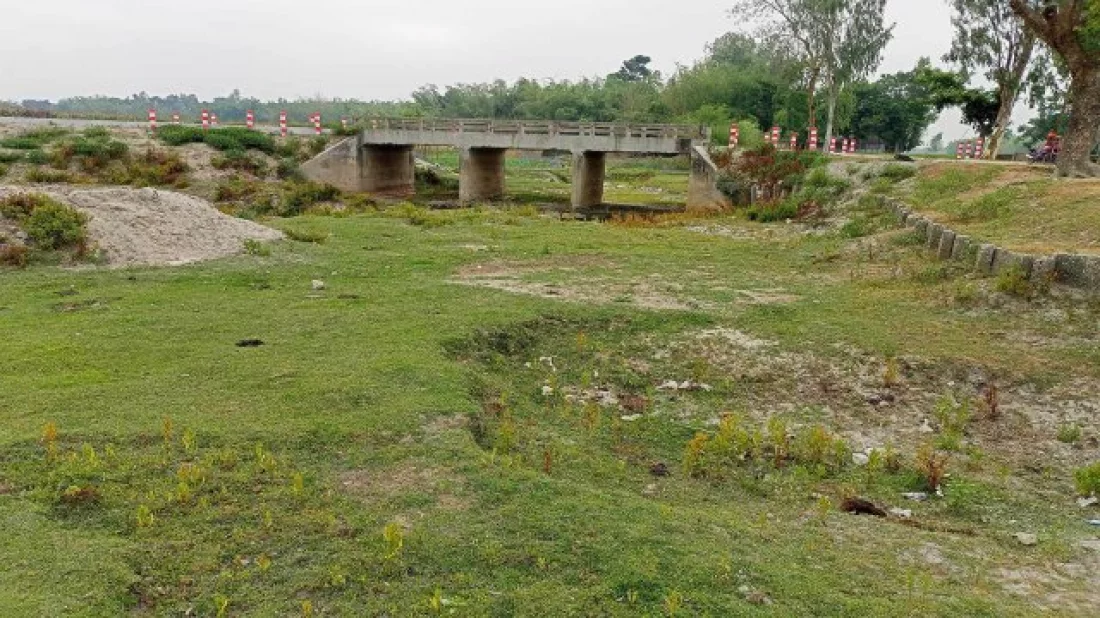
Due to unabated encroachment and pollution the once Burikhora River in Nilphamari has now turned into a canal. Now, local farmers are cultivating paddy on the vast field that has emerged on the riverbed. On the other hand, the narrow canal which was once Burikhora River is also being polluted by a dumping of industrial waste. As a result, the biodiversity in the district is in danger.
This is the story for at least 24 rivers of the district. Numerous small and large shoal islands have emerged over the vast area of most of the rivers. Innumerable structures have also been built on both sides of these rivers.
According to data provided by the non-governmental organization Riverine People, the number of rivers flowing through the six upazilas of the district is 34. However, according to the Nilphamari Water Development Board, 24 rivers in the district stretch across 1,440 kilometers. Officials have said that they will use dredgers to bring back the rivers—that influential people have encroached on—to life again.
The rivers in the district are Teesta, Buri Teesta, Jamuneshwari, Chakla, Kharkharia, Deonai, Charalkata, Chara, Burikhora, Dhum, Bamondanga, Panga, Kumlal, Nautara, Ichamati, Kalamdar, Bullai, Shalki, Kherkati, Khera, Chikli, Chekadara, Auliakhana, and Dhaijan.
Some influential people have already established businesses on both banks of the river. And this process is never ending, local people alleged.
Locals say that the rivers have lost their navigability due to encroachment and pollution. This has been going on for ages, the locals said, adding that the authorities are yet to intervene in saving these rivers.
Burikhora River flows through Bahalipara village of Ramnagar union. Its origin is in Kolumdar village of Domar Upazila. At several points of the river, farmers are currently cultivating boro paddy and maze.
Ramesh Chandra Roy, 68 and Bishwanath Roy, 70, both of whom are farmers, said that canoes and trawlers used to pass through Sannasir Ghat, Kadmatoli and Budarur Ghat areas. Traders from home and abroad used to come to the area through these points. But now that is all in the past. The water has dried up as the river bed is filled with soil and silt.
The Jamuneshwari River originates from Ketkibari village of Domar. From there it flows south to Gomnati, Bamnia, Boragari, Matukpur and Dharmapala areas. Local farmers are utilizing the fertile riverbed for boro cultivation.
Local farmers, Azizur Rahman, 67, and Mizanur Rahman, 68 said that once there was sufficient water flow in the river. The people of the village used to swim there during summer. The river that used to supply water for farming has now turned into a farmland.
Mizanur Rahman said that even if the rivers are dug again they will not benefit the local farmers anymore as the encroachers have already grabbed lands on both sides of these rivers.
The Kumlal River originates at Jharsingheshwar in East Chatnai Union of Dimla. Shaher Ali (63), a local resident, has opened five shops in Shutibari Bazar area by filling up one portion of the river. When asked, he said: “My shops are on the river. The Mohila Market is also built on the river. Now there is no river anymore, it has dried up.”
Locals alleged that an institution named Gayabari Ideal Girls' High School has been built on the riverbed as well.
Nilphamari Water Development Board Executive Engineer Atiqur Rahman said: "There are 1,440 kilometers of rivers in the district and 65-70% of these rivers were dredged in FY 2021-22. Because of this, the last floods did not affect people's lives. Those who have occupied rivers and built structures will also be evicted.”
Abu Saleh Mohammad Wadudur Rahman (Tuhin Wadud), Director of Riverine People and Professor at the Bengali Department of Begum Rokeya University, Rangpur, said, "All the rivers of Nilphamari are facing death due to encroachment. In 2019, the High Court had declared all the rivers of the country as living entities. It also makes it a criminal offense to kill a river.”
Tuhin Wadud said that there are 270 illegal occupiers on the Kumlal River. He said that punitive measures must be taken against all of them to protect the rivers in the district.



